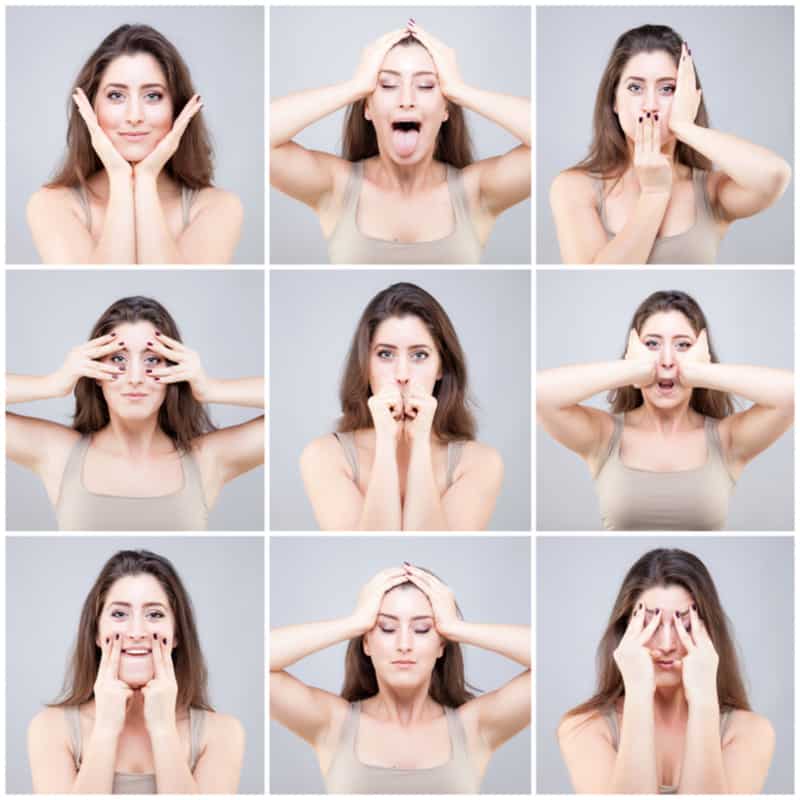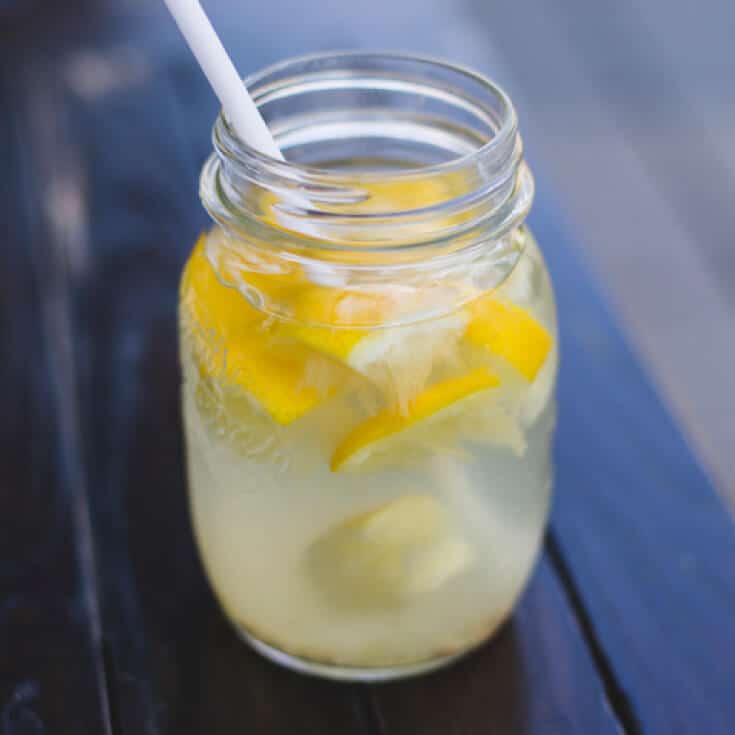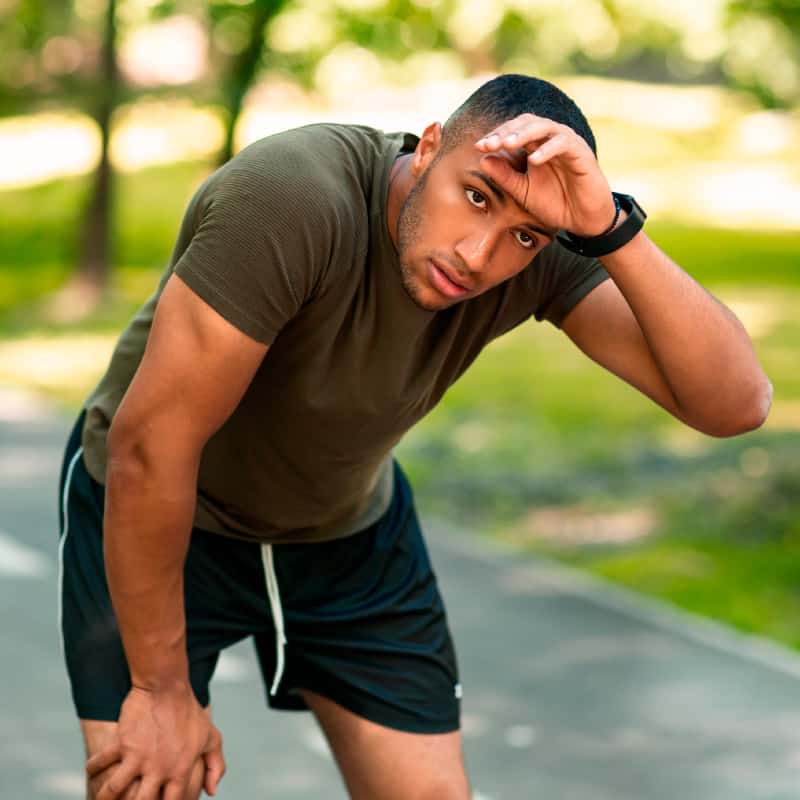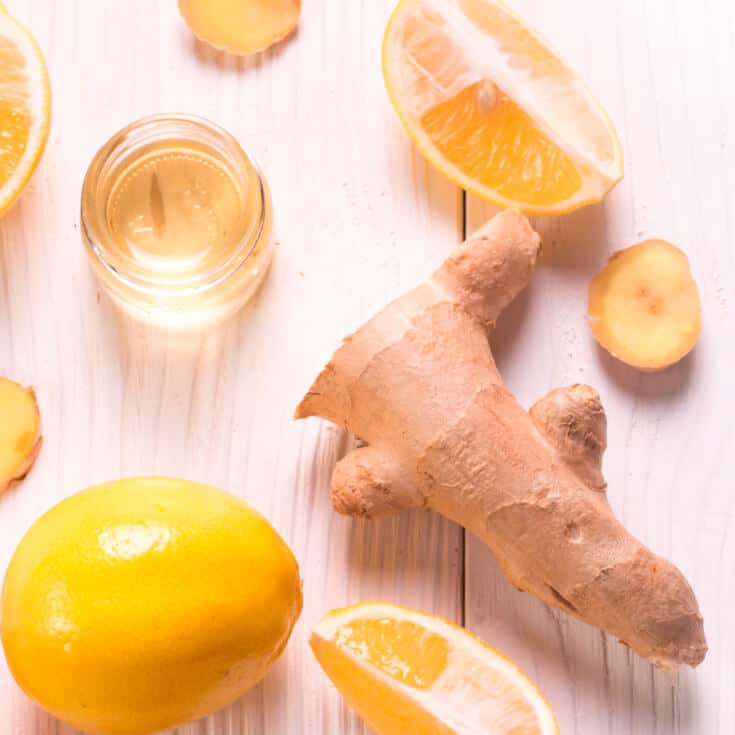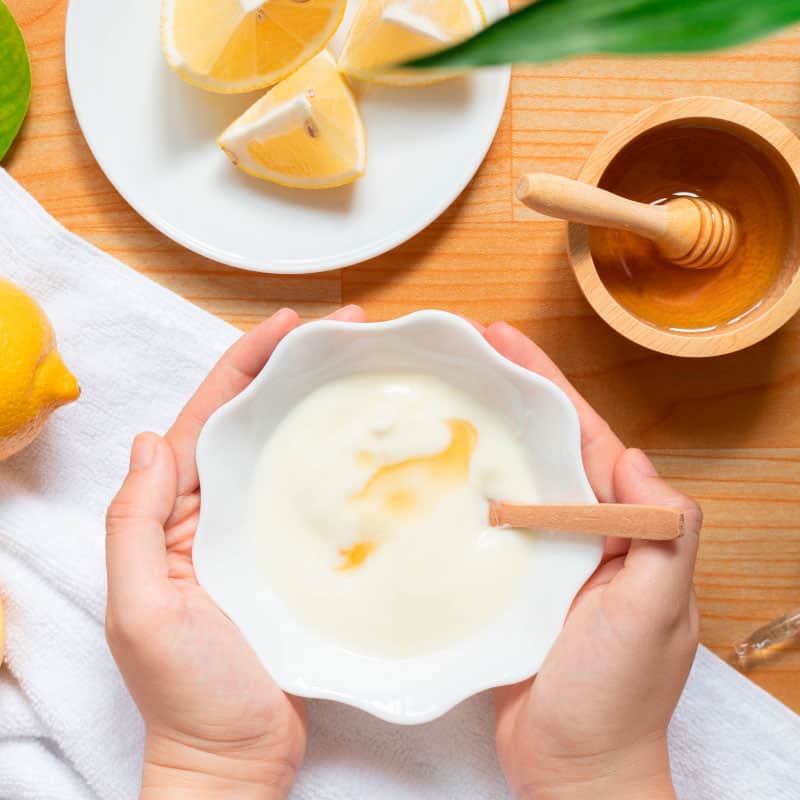This Dr. Axe content is medically reviewed or fact checked to ensure factually accurate information.
With strict editorial sourcing guidelines, we only link to academic research institutions, reputable media sites and, when research is available, medically peer-reviewed studies. Note that the numbers in parentheses (1, 2, etc.) are clickable links to these studies.
The information in our articles is NOT intended to replace a one-on-one relationship with a qualified health care professional and is not intended as medical advice.
This article is based on scientific evidence, written by experts and fact checked by our trained editorial staff. Note that the numbers in parentheses (1, 2, etc.) are clickable links to medically peer-reviewed studies.
Our team includes licensed nutritionists and dietitians, certified health education specialists, as well as certified strength and conditioning specialists, personal trainers and corrective exercise specialists. Our team aims to be not only thorough with its research, but also objective and unbiased.
The information in our articles is NOT intended to replace a one-on-one relationship with a qualified health care professional and is not intended as medical advice.
Benzoyl Peroxide for Acne: Benefits, Uses, Side Effects & More
January 12, 2024
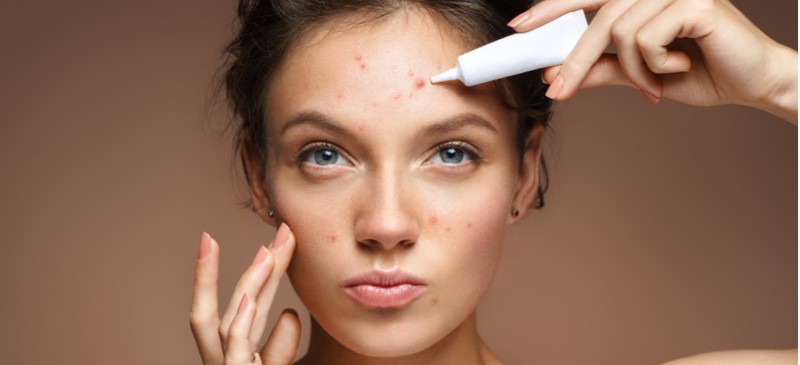
Acne is the most common skin condition in the United States, affecting people of all ages. What’s one of the most popular ingredients used to prevent breakouts, often recommended by dermatologists? It’s called benzoyl peroxide, which you’ll find in washes, creams and many other skincare products.
According to studies, benzoyl peroxide cream, washes and gels seem to be especially helpful for people with difficult-to-treat inflammatory or cystic acne, which can appear as painful pustules, cysts and nodules that form below the surface of the skin.
What Is Benzoyl Peroxide?
Benzoyl peroxide (BPO) is a topical antibacterial treatment that is most often used to treat acne. It’s sold over-the-counter in a range of concentrations, so you don’t need to visit a dermatologist to begin using it.
It’s also available by prescription in more concentrated forms and sometimes combined with other treatments (such as antibiotics or retinoids).
You’ll find this ingredient in products including benzoyl peroxide creams and lotions, face washes, body washes, exfoliants/scrubs, and spot treatments.
How It Works
What does benzoyl peroxide do to your face and skin exactly?
Chemically speaking, BPO is an organic peroxide. It acts as a nonspecific oxidizing agent when applied to the skin.
Here are some of the ways that benzoyl peroxide works:
- Acts as an anti-inflammatory and comedolytic agent. It can help reduce the appearance of pores by decreasing pimples, inflammation and redness caused by infected bumps under the skin.
- It delivers oxygen to the skin. This can help to open up pores.
- It has antimicrobial properties. It reduces acne breakouts (and keloids) by decreasing the presence of bacteria including p. acnes bacteria, as well as dead skin cells that clog pores.
- It has a drying effect, so benzoyl peroxide wash can help decrease excess sebum (oil) on the skin, decreasing shine. BPO also has exfoliant properties, improving the appearance of the skin’s texture/tone.
Benefits
1. Helps Control Different Forms of Acne
Benzoyl peroxide can address acne vulgaris, which is a chronic inflammatory disease that often affects the hair follicle sebaceous glands on the face, chest and back. In Japan, where more than 90 percent of the citizenry develop this problem, benzoyl peroxide is recommended as a drug for the treatment of inflammatory and non‐inflammatory acne vulgaris lesions.
Cystic acne is considered most severe form of acne vulgaris. This type of acne does not always result in whiteheads and blackheads but can instead cause red bumps that are sensitive and take longer to heal.
A 2020 study revealed that benzoyl peroxide as a single therapy or add-on treatment may be more effective than placebo or no treatment for improving acne — and there may be little to no difference between BPO and either adapalene or clindamycin.
Some dermatologists also recommend BPO for people who mostly experience acne in the form of smaller blackheads and whiteheads (non-inflammatory acne).
Depending on how severe someone’s acne is, benzoyl peroxide may be used along with other acne-fighting ingredients, including prescription antibiotics in some cases if deemed necessary.
2. Can Balance Oily Skin and Exfoliate
While other acne treatments may be more appropriate for people with sensitive or dry skin, benzoyl peroxide is a good option for those with less sensitive, oilier skin. That said, it’s generally still effective for a variety of skin types.
Although it’s not usually marketed as an anti-aging product, BPO can also help exfoliate and smooth the surface of the skin, which may help improve its overall appearance. One thing to note however is that it can also increase sensitivity to sunlight, so being careful and/or wearing sunscreen is a must.
3. May Decrease Appearance of Acne Scars
Some research suggests that benzoyl peroxide cream can help shed dead skin cells and reduce the appearance of acne scars when used regularly. Results depend on how dark the scar is, and combining BPO with other treatments may lead to even more noticeable improvements.
Risks and Side Effects
Is benzoyl peroxide bad for certain skin types? It can potentially irritate your skin if you tend to have sensitive skin or if you use too much too often.
Benzoyl peroxide side effects potentially can include:
- Skin irritation and redness
- Dryness and possibly peeling
- Signs of an allergic reaction, such as a skin rash/hives/itching
You’re more likely to experience skin irritation if you use products with higher percentages of BPO. If you notice lots of dryness and redness, discontinue use for a few days and then start using it again at lower concentrations and/or with less frequency.
If you respond well to benzoyl peroxide, you can increase the strength of the products you use gradually, over the course of several weeks.
It’s recommended that if you’re pregnant you avoid using this product in any form, since it may be absorbed through the skin and may lead to complications.
Another thing to be aware of that is that benzoyl peroxide can stain and bleach fabrics. Be careful about applying BPO to your skin and then having it rub off onto towels, bedsheets, clothing, etc.
The best way to avoid staining fabrics is to completely rinse it off if using a cleanser or totally let it dry on your skin before getting dressed if using a cream/spot treatment.
How to Use
BP products come in several over-the-counter forms, as well as in different strengths.
Here’s how to use benzoyl peroxide effectively while minimizing risk for side effects:
- Determine which concentration/strength you need, depending on the severity of your symptoms. For example, BPO products range from 2.5 percent to 10 percent. Lower concentrations up to 5 percent may be more appropriate for mild to moderate symptoms, while 10 percent strength is better for moderate to severe symptoms.
- When just beginning to use benzoyl peroxide cream and other leave-on products, stick to lower concentrations between 2.5 percent to 5 percent, which are often strong enough to provide benefits. These products are typically applied once or twice a day on the entire area of affected skin.
- Ideally, creams and gels should be applied about 15 minutes or so after washing the skin and allowing it to dry. Don’t wash your face for at least one hour after applying benzoyl peroxide cream or gel.
- If you’re using benzoyl peroxide wash, soap or cleaners, you may be able to tolerate higher percentages than when using cream. Like lotions, these products can be used once or twice daily.
- Body washes and soaps with BPO are also helpful for breakouts on the chest and back, not just the face.
- Avoid putting BPO too close to the eyes and nostrils. Also be careful about strong sunlight when using BPO, or use a sun cream with a high sun protection factor.
How long does it take for benzoyl peroxide to work?
You may need to use it for at least six weeks before seeing results. If you haven’t noticed an improvement in symptoms after two months of use, then it’s recommended that you make an appointment to speak with your dermatologist.
Benzoyl Peroxide vs. Salicylic Acid
Is benzoyl peroxide or salicylic acid (SA) better? Both of these products can help address the most common causes of acne — including presence of harmful bacteria, clogged pores caused by things like excess oil production and dead skin cells, and excess sebum (the type of oil released into hair follicles that can become trapped beneath surface of the skin).
Salicylic acid is a common active ingredient that helps remove excess cells that trap sebum and bacteria inside pores. It can also cause redness and dryness, especially on sensitive skin.
Start with a product containing 0.5 percent to 3 percent salicylic acid to avoid experiencing dryness and other reactions.
Overall, BPO may be better at treating cystic and inflammatory acne among people with oiler skin, while SA may be better suited for non-inflammatory acne and dryer skin.
Can you use these two ingredients together? Yes, however be careful not to overdo it.
If using both, stick to lower concentrations, especially at first.
Alternatives for Skin Health
What else can you use to support your skin’s health if you’re worried about experiencing benzoyl peroxide side effects? Try these natural home remedies for acne and tips for generally keeping skin clean and protected:
- Try applying tea tree oil to acne prone areas. Tea tree oil is considered one of the best home remedies for acne due to its antimicrobial properties. According to some research, tea tree oil gels containing 5 percent tea tree oil may be as effective as medications containing 5 percent benzoyl peroxide.
- Be careful not to over-wash your skin or over-apply products, which can actually worsen inflammation and irritation. Try this recipe for Homemade Honey Face Wash to cleanse skin gently without causing irritation. Remember to use a gentle moisturizer too, such as coconut oil.
- Honey and cinnamon used together can help fight acne because of their anti-inflammatory, antioxidant and antibacterial properties. Try them in homemade face masks. Sea salt, brown sugar and ground oatmeal are also good choices for gently exfoliating skin to remove dead cells.
- Read ingredient labels to avoid putting makeup or other chemical products on your sensitive skin. Common offenders found in cosmetics can include lanolin, parabens, polyethylene, BHA and BHT.
- Prevent getting too much sun exposure.
- Take a daily probiotic supplement to support immune health.
- Avoid eating the “standard Western diet” that includes lots of refined grains, sugar and unhealthy fats, which can promote inflammation and hormonal imbalances.
- Get a handle on stress, which can lead to hormonal issues that trigger breakouts.
- Consider if use of certain medications, including corticosteroids, androgens, birth control pills and lithium, may be contributing to your skin issues. Speak to your doctor about alternatives if so.
Conclusion
- Benzoyl peroxide (BPO) is an ingredient found in skincare products that can help treat inflammatory or cystic acne.
- It’s sold over-the-counter but is also available by prescription in more concentrated forms.
- You’ll find BPO in creams and lotions, face washes, body washes, exfoliants/scrubs, and spot treatments.
- When used in too high of doses or too frequently, benzoyl peroxide side effects may include dryness, redness, irritation, peeling and rashes. This is more likely to occur among people with sensitive or already-dry skin.
- When just beginning to use benzoyl peroxide cream and other leave-on products, stick to lower concentrations between 2.5 percent to 5 percent. Washes can be used in higher concentrations, once or twice daily.

